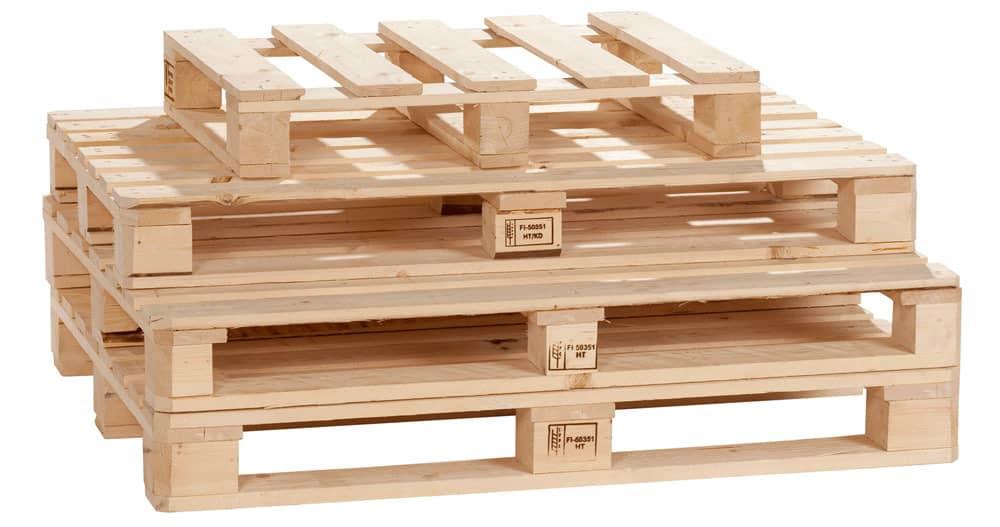Pallet: An Unsung Hero of the Supply Chain

Pallets play an essential yet largely invisible role in the modern supply chain. These simple wooden platforms may not be flashy, but they are critical for efficiently and safely transporting goods from manufacturers to warehouses to stores.
What is a Pallet?
The History and Design of This Supply Chain Workhorse
A pallet is a platform on which goods can be stacked and secured during transport or storage. Made from wood or plastic, pallets serve as a base that allows loads to be lifted and moved by forklifts, pallet jacks, conveyor belts, and other material handling equipment.
Wooden pallets first emerged in the early 20th century as manufacturers sought more efficient ways to move goods. Early pallet designs standardized dimensions and materials, helping forklifts and other machinery interface with any palletized load. Over time, pallets evolved into the efficient, standardized platform we know today.
Most common wooden Pallet conform to Grocery Manufacturers Association (GMA) or International Organization for Standardization (ISO) specifications, measuring 48 x 40 inches. Plastic pallets are also gaining popularity due to their increased durability, lower weight, and reduced risk of pest contamination. Regardless of material, pallet design focuses on strength, stability, and compatibility with material handling equipment.
Pallets Ensure Efficient Movement of Goods
Why Palletization Streamlines Warehouse, Distribution, and Retail Operations
Palletization revolutionized logistics by allowing easy, automated handling of goods from factory to warehouse to store shelf. Properly palletized products can be effortlessly transferred between trucks, conveyors, storage racks, and more without time-consuming reloading or repacking. This consistent unitization allows high-volume, continuous operation of material handling equipment.
For warehouses and distribution centers, palletized goods maximize space utilization. Pallets allow dense packing of goods in racks up to 40 feet high. Automated storage and retrieval systems precisely pick and place pallets for efficient order fulfillment.
At retail stores, pallet-based delivery lets suppliers fully stock shelves with a single placement, minimizing labor costs. Plastic pallets additionally resist damage from moisture or spills. With efficient palletized shipping, stores can refresh inventory daily versus weekly shipments.
The Benefits of Standard Pallets
Why Consistent Dimensions Streamline Supply Chain Operations
The standardization of pallet dimensions has been crucial to maximizing efficiency. Common pallet sizes ensure compatibility with material handling across all links in the supply chain. Forklifts, racks, conveyors, and other equipment are designed to interface seamlessly with standardized pallet loads.
Dimensional consistency lets one facility’s pallets be utilized anywhere. For example, empty pallets can be returned at any point rather than a single source. Transloading between truck trailers or railcars is also simplified, minimizing touch points and related costs.
Companies benefit from a vast pool of standardized pallets always in circulation. Access to abundant, low-cost pallets saves manufacturing, warehousing, and distribution costs. Standardization eliminates need for unique, individualized pallets that restrict mobility and versatility.
Of course, standard dimensions also facilitate pallet pooling between businesses. Third-party pallet management services cycle reusable pallets most efficiently when designs are uniform across customers and industries. Pooling lowers pallet costs and waste versus one-time use models.
Sustainable Pallet Management Practices
How Reusable and Recycled Pallets Extend Lifecycles
With billions of pallets in circulation globally, responsible management practices are important both environmentally and economically. Reusable pallets optimize value through multiple lifecycles, reducing wood and plastic consumption.
Major pallet manufacturers operate pallet services that maintain, repair, and redistribute assets. Businesses leave empty pallets for pickup, where they undergo quality control to identify needed repairs before being redeployed.
Get More Insights On This Topic: https://www.trendingwebwire.com/pallet-an-important-component-of-logistics-and-supply-chain/
- Art
- Causes
- Crafts
- Dance
- Drinks
- Film
- Fitness
- Food
- Games
- Gardening
- Health
- Home
- Literature
- Music
- Networking
- Other
- Party
- Religion
- Shopping
- Sports
- Theater
- Wellness
- IT, Cloud, Software and Technology


